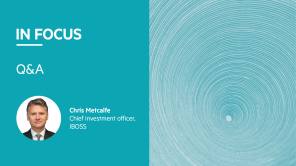
Talk of trade wars has only made an already difficult situation worse.
While much of this volatility has been focused at the currency and sovereign debt level, EM equities have not been immune as the macro clamour has drowned out the fact that many EM corporate fundamentals remain strong.
Past experience can be a strong driver of investor behaviour when it comes to EM, witness the haste with which many rush to invoke the spirits of crises past whenever the asset class encounters a bout of turbulence.
Typically, flows into EM have been predicated on investor expectations for global growth: positive and the asset class can expect inflows; negative and outflows are likely. The rationale for such behaviour was the sensitivity of EM to the economic cycle given the cyclicality of the companies within EM indices.
However, the EM of yesterday is not the EM of today. Since 2010, a decline in the presence of materials and energy companies has been offset by an increase in the importance of the technology sector.
This has implications for the earnings drivers for EM and means its correlation to the broader global economic cycle is lower than it has been in the past.
This is true at a time when the outlook for much of EM (excluding China) is actually quite bright. Many of the economies that bottomed in 2015-16 continue to recover, with nominal gross domestic product picking up, inflation falling and current account deficits improving. All this is driving an earnings recovery for EM corporates. We expect this to continue in 2018 and estimate earnings growth of around 15 per cent at the same time as corporates continue to de-lever and improve cash flow. If we look at this backdrop through the prism of valuations, EM looks attractive relative to developed markets, especially the US where valuations appear expensive relative to five and ten year averages.
However, all this is not to ignore risks that are very real. One of these is the tightening of monetary policy globally. While many view the withdrawal of liquidity as a problem for EM from a macro perspective, we are more concerned with the potential implications for asset prices. Quantitative easing undoubtedly had more of an impact on equity valuations than it did on economic growth. The removal of this support could mean that valuations struggle to find support at current levels.
Another area of concern is China and the threat of protectionism. China is an ever-larger constituent of the EM universe and this is one of the key reasons why overall EM corporate debt looks high. Under President Xi Jinping, the country is focused on trying to deleverage and slow the growth of credit. While this is to be welcomed, it is a course of action most likely to succeed against a strong economic backdrop. Should we see a pick-up in protectionism the inevitable knock-on effect on growth will make it less likely that China will be successful in tackling its debt issues and increase the chance of a policy error that has negative consequences for the global economy.
So the outlook for EM equities is not without risks and volatility could well remain high, certainly by the becalmed standards of 2017. But with the strong fundamentals of corporate EM still intact as many EM economies continue to recover, we believe the asset class continues to offer opportunities for investors willing to look through the macro noise.
Mark Gordon-James is senior investment manager of Aberdeen Standard Investments



